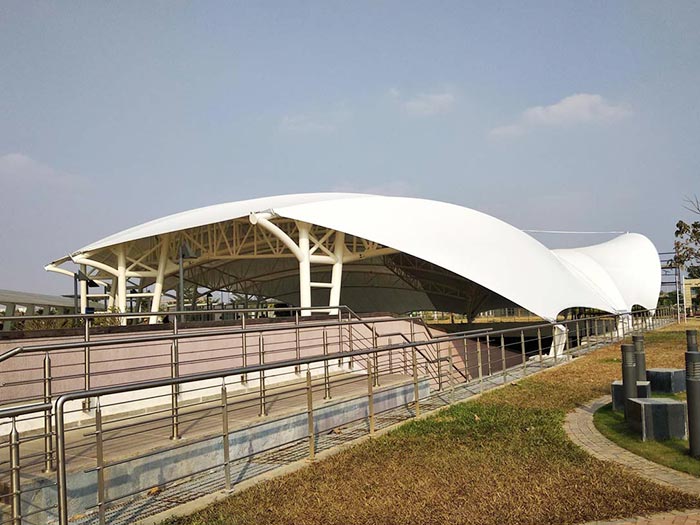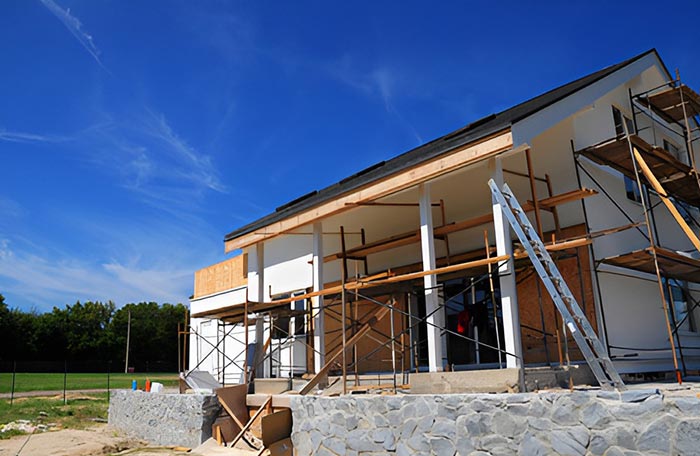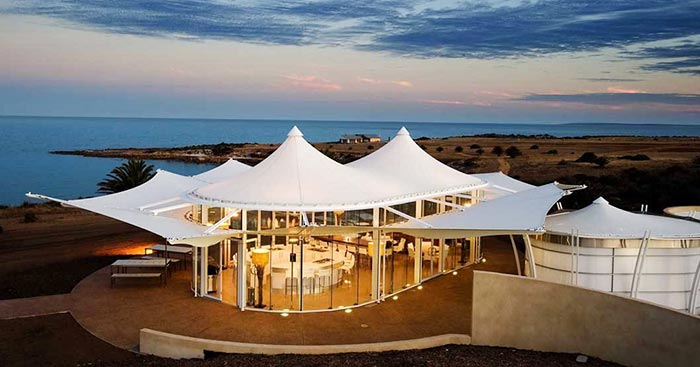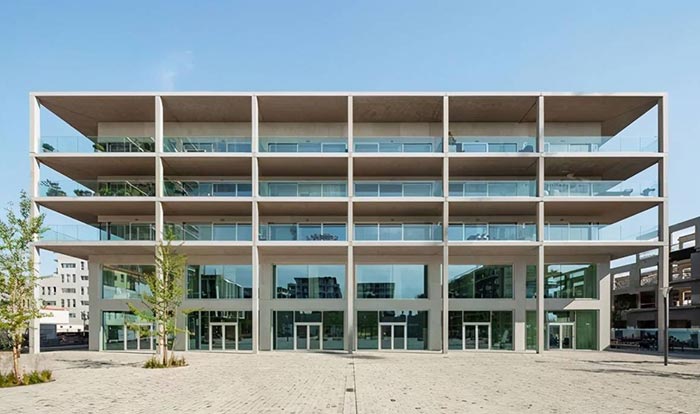Comparison between tensile structure buildings and traditional buildings
There are many differences between tensile structure buildings and traditional buildings:
Building materials
Tensile structure buildings: mainly use high-strength flexible film materials, such as PVC, PTFE, ETFE, etc., with the characteristics of light weight, high strength, and good light transmittance.
Traditional buildings: mostly use bricks, stones, concrete, steel, wood, etc., the materials are thick, with good strength and stability, but heavy.

Structural form
Tensile structure buildings: relying on the tensile stress of the membrane itself and the support rods and cables to form a mechanism system, it can form complex shapes such as single curved surfaces and multiple curved surfaces, creating large-span unobstructed spaces.
Traditional buildings: mostly beam-column structures, frame structures, arch structures, etc., the structural form is relatively fixed, and large-span buildings are difficult to achieve and costly.
Shape and beauty
Tensile structure building: The shape is free, light, soft and powerful, the curved lines are smooth, with a strong sense of sculpture and modernity, can be integrated with the natural environment, and can design various unique spatial forms.
Traditional architecture: The shape is relatively regular and stable, and is greatly restricted by structure and materials, but it has unique advantages in historical and cultural heritage and regional characteristics.

Construction difficulty and cycle
Tensile structures: easy to make and quick to install, the membrane material can be prefabricated in the factory, the on-site installation time is short, and the foundation requirements are relatively low.
Traditional architecture: The construction process is complicated, requiring a lot of manpower, material resources and time, the foundation construction requirements are high, it is greatly affected by natural factors such as weather, and the construction cycle is long.
Space utilization and lighting
Tensile structure buildings: The internal space is open and harmonious, without strong contrast between the light surface and the shadow. During the day, the sunlight can pass through the membrane material to form diffuse light, with good natural lighting effect, which can effectively save lighting energy and create a space form comparable to the natural environment.
Traditional buildings: The lighting method mainly relies on windows, skylights, etc. The lighting effect is affected by factors such as the building orientation, window size and location. Some large-span buildings have insufficient internal lighting and need artificial lighting to supplement.

Durability and maintenance cost
Tensile structures: The service life of architectural membrane materials is generally 15-30 years. It has the characteristics of good self-cleaning and strong weather resistance. The maintenance cost is low, and only the surface of the membrane material needs to be regularly inspected and cleaned.
Traditional buildings: Good durability, but affected by the natural environment and service life, regular maintenance and repairs are required, such as wall painting, roof waterproofing, wood structure anti-corrosion, etc., and the maintenance cost is high.
Economical
Tensile structure buildings: The initial construction cost is relatively low, especially for buildings with large spans and complex shapes, which can reduce the foundation and structure costs, and the construction period is short, which can save time costs.
Traditional buildings: Traditional buildings with large spans or complex shapes have high construction costs and require a large amount of building materials and complex construction processes. However, in some simple buildings, due to the maturity of materials and technologies, cost control is better.

Safety
Tensile structure buildings: light weight, good stability under horizontal loads such as earthquakes, even if an accidental collapse occurs, the danger is relatively small, and the membrane material has a certain elasticity and can absorb some impact energy.
Traditional buildings: generally have good earthquake and wind resistance, but due to their heavy weight, once a collapse occurs, the danger is relatively high.